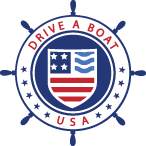All About Safe Boating with Infants and Children
If you love boating, you may be wondering how soon you can take your infant or child out on the water with you. Here are tips for boating with kids, and especially for deciding if, when and how to take your infant, toddler or child on a boat with you.
 Safe boating with infants
Safe boating with infants
The United States Coast Guard does not recommend taking an infant out on the water until they are at least 28 pounds, or large enough to wear a correctly-fitting life jacket.
Infant life jackets
Babies should not travel on any type of recreational vessel without wearing the proper safety gear. Across the United States, the law stipulates that all infants and children under the age of 13 must wear a life jacket at all times while boating.
An appropriate infant life jacket must be approved by the U.S. Coast Guard, be in good working condition, and fit properly. Infant life jackets are typically designed for babies weighing between 8 to 30 pounds, but the most important factor to consider is whether the PFD fits correctly. The following features are also important:
- Flotation pad to keep the infant’s head above water
- Crotch strap to prevent the jacket from sliding up
- Grab handle for easy retrieval from the water
- Padded head support with a double collar
Infant safety on board
In addition to wearing a proper PFD, there are a few other things you can do to make your infant’s boating experience safe and enjoyable:
- Create a special, safe area on the boat where the baby can play or relax, using portable playpens or cushions to create barriers.
- Always hold your infant in your arms while the boat is in motion, supporting their head to protect their neck against the bobbing motion of the boat. Ideally, you should only take a baby on a boat once they have the strength to easily hold up their head by themselves.
- Never use a car seat! They are not approved for boats and can sink if the boat capsizes.
- Pack essential items such as diapers, wipes, extra clothing, hats, sunscreen, and plenty of water to keep the baby hydrated. Remember, young infants do not sweat as efficiently as adults, and are therefore more susceptible to heat stroke.
- Make sure you know basic first aid procedures and have a well-stocked first aid kit on board.
Safe boating with kids
United States boating laws stipulate that kids on a boat must wear a life jacket. Some exceptions may apply in certain states, making it all the more important to follow a state-specific boating safety course.
Life jackets for children
Choosing the right type of children’ life jacket is important for several reasons:
- Wearing a life jacket can mean the difference between life and death. There are thousands of recreational boating accidents each year. In the United States, 54 deaths and 459 injuries were reported in people younger than 19 in 2022 alone.
- Children are particularly vulnerable to drowning accidents due to their smaller size, limited swimming abilities, and tendency to engage in risky behaviors around water. Always consult your boat capacity plate to determine how many children you can take on your boat at a time.
- Correctly-fitted, USCG-approved life jackets provide essential buoyancy, keeping a child’s head above water even if they become unconscious or exhausted.
- Life jackets also offer some protection against cold water shock and hypothermia.
- Wearing a life jacket right from the start instills a respect for boating safety in young people and is the first step toward a lifetime of safe and enjoyable boating experiences and a positive relationship with water.
Swimming lessons
Safety tip: Children should know how to swim before going out on a boat. Swimming lessons can reduce the risk of drowning by up to 88%.
Swimming lessons also include important lessons about basic boating safety and teach skills that prevent drowning and are key to survival if they unexpectedly fall into the water, such as how to return to the surface, how to get out of the water, and how to avoid hypothermia. These are especially important when in open water environments such as areas where you go boating.
Swimming lessons also increase children’s confidence in and around water, and give them the skills to react correctly in case of water-related emergencies.
Boating safety equipment for children
While life jackets are the single most important piece of boating safety equipment for children, there are a few other things you may want to add to your boat to keep young passengers safe and make boating fun:
- Safety netting: Boat safety lifeline netting can be installed to prevent children from falling overboard.
- Boat safety kits: Some manufacturers offer age-appropriate safety kits that may include child-specific items.
- Flotation devices: In addition to wearable life jackets, throwable flotation devices are required and can be used to rescue a child who has fallen into the water. Make sure they understand how to use them before getting on board.
- Sunscreen and/or bug repellant: Remember, UV rays are about 20% more intense on the water due to reflection.
- Emergency signalling devices: Older children can learn to recognize and perform basic safety signals in case of an emergency. These include visual distress signals like flags, and audio signals like horns or whistles. They can also learn the correct names for parts of the boat, such as starboard and port.
- Additional equipment for specific activities: If you plan on enjoying watersports, make sure that your life jacket is approved for your chosen activity (inflatable PFDs are not approved for tubing) and you have taken every precaution to prevent propeller strikes. Make sure children have learned the correct hand signals if they are going to be towed.
Safe behavior around the dock
Kids will probably get excited at the prospect of going for a boat ride. Don’t forget to teach them how to behave in the areas around the boat, including the marina, dock and boat trailer.
Keep your family safe with the Drive A Boat USA boating safety course
When you’re out on the water with children, be extra careful about safety! Choose a day with calm weather and launch your boat in an area with smooth, safe waters so you have the best chance of enjoying your time on the water. With the right approach, you can create lasting, enjoyable memories of struggle-free water activities.
In many parts of the United States, you need a boating license to take to the water legally. Following a boater safety course is a great way to learn what you need to know to enjoy water sports with friends or family as safely as possible. Boaters in New York, California and Florida can earn their NASBLA and U.S. Coast Guard approved license online today from Drive A Boat USA!


 Safe boating with infants
Safe boating with infants